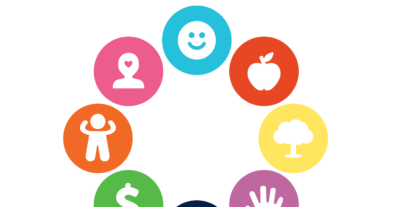INSPIRED – HEALTH LITERACY
Read ArticleJanuary 19, 2022
Why Getting Messy Is Essential to Early Childhood Development
Getting messy is an essential part of children’s early childhood development. In fact, if you reflect on your own childhood, playing in the mud or jumping in rain puddles is probably one of your favorite memories. Here are just a few reasons you should embrace messy play in the classroom:
- Messy play provides hands-on learning experiences. Reading about something is a very different thing than actually seeing something in person and having the opportunity to touch and observe it. For example, you can read about rain in books, watch it fall, and measure how much rain has fallen, but you can’t really understand what rain feels like until you feel raindrops on your skin or you’re jumping in puddles of rainwater.
- Messy play gives children the freedom to be creative. Messy play allows children to be children. If messy play is unrestricted (within reason), children have the freedom to express their thoughts, build creations they’ve been wanting to build, try new things, and experiment with different materials and textures. All of these are things that children may not have otherwise been able to do if they weren’t presented with messy play opportunities.
- Messy play enhances children’s sensory development. One important thing to remember is that messy play is also sensory play. Children get to feel clumps of dirt between their fingers, feel paint dry on their skin, feel and smell flowers, and take part in a variety of other sensory experiences. Helping children develop their senses by sensory learning through messy play will ultimately provide them with a solid foundation of knowledge for the years ahead.
- Messy play supports kinesthetic/tactile learning. Kinesthetic/tactile learners need to move their bodies and touch or write things to understand and focus on what they’re learning, which is why messy play supports this type of learning. By encouraging children to write the alphabet in the dirt or use dough cutters to make numbers out of dough or clay, you can help kinesthetic/tactile learners excel in their education while also reinforcing concepts for other types of learners.




